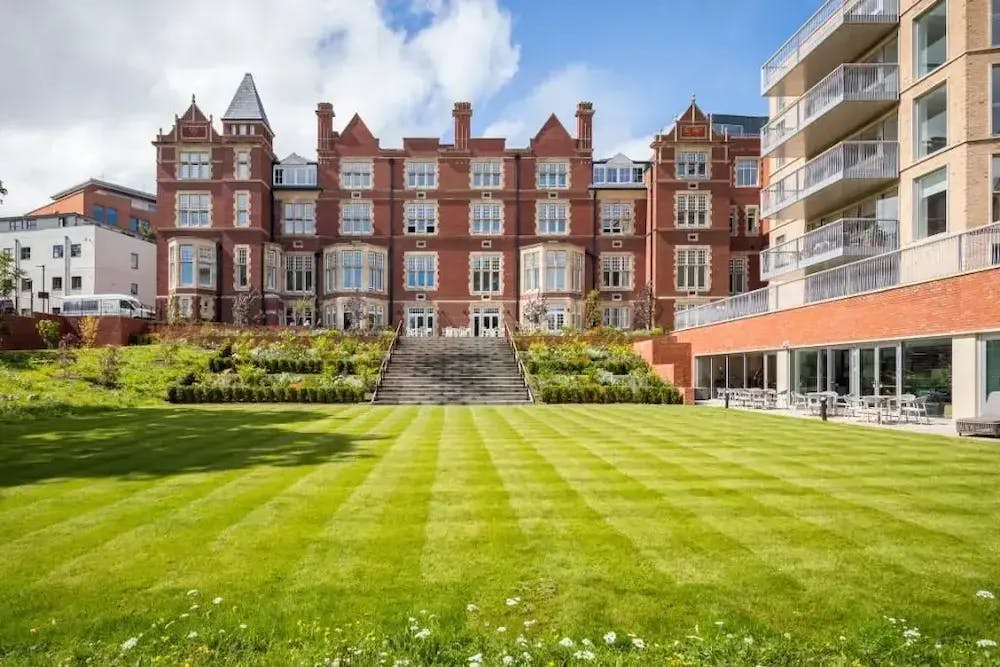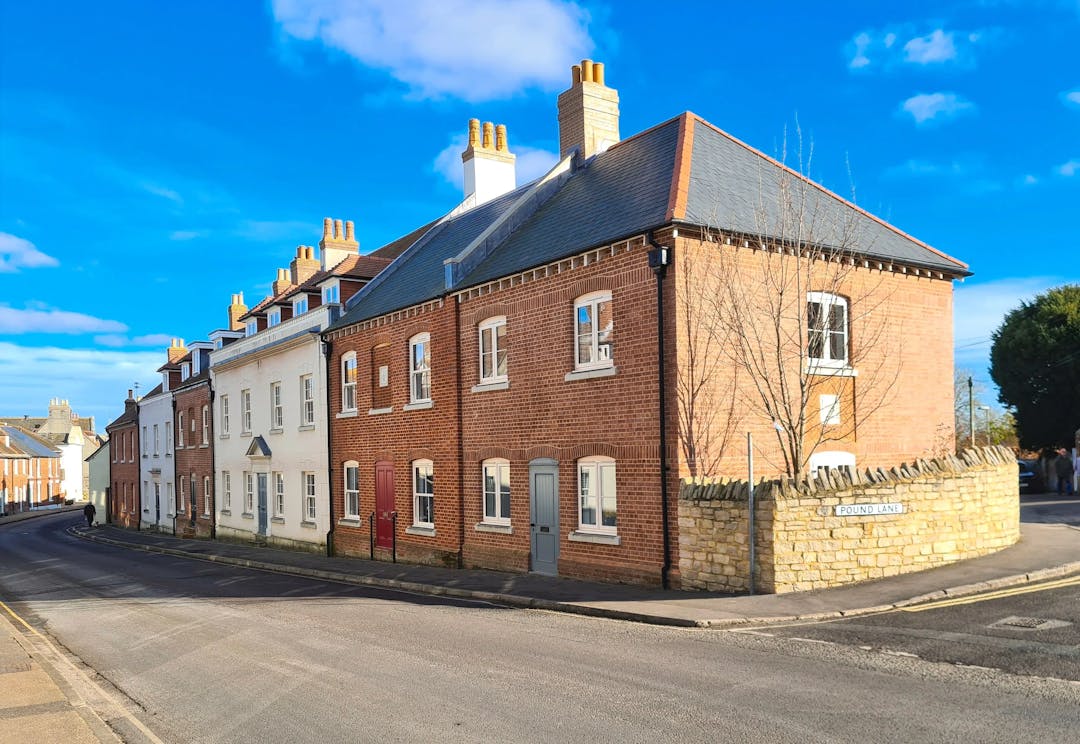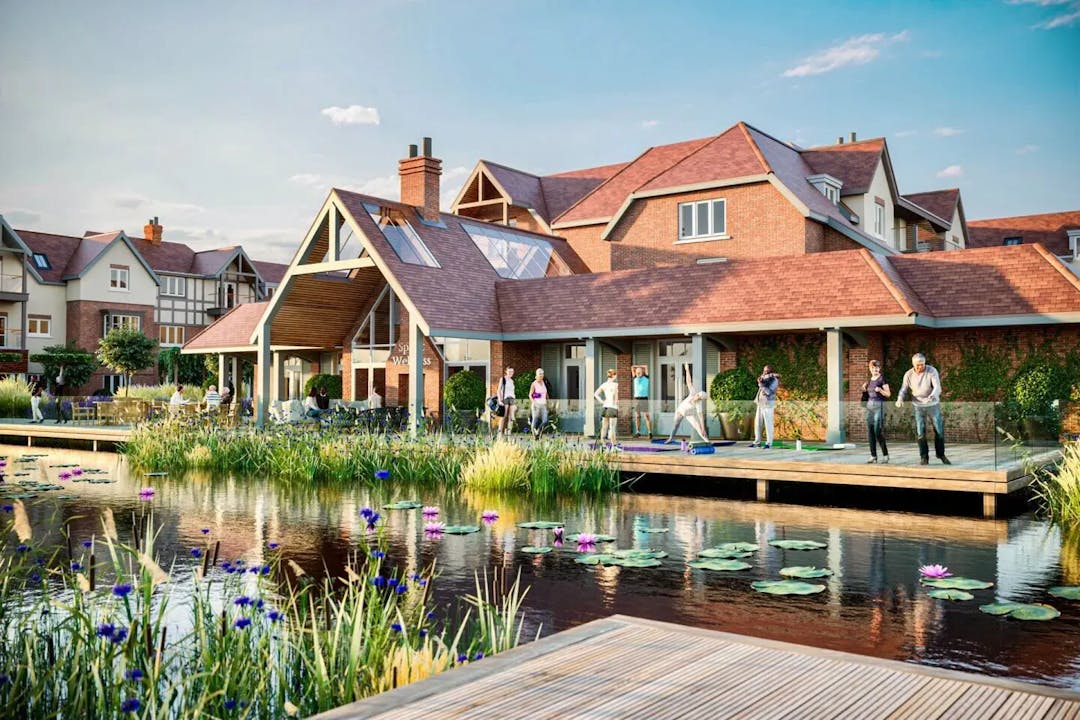What is a Retirement Village? Everything You Need to Know
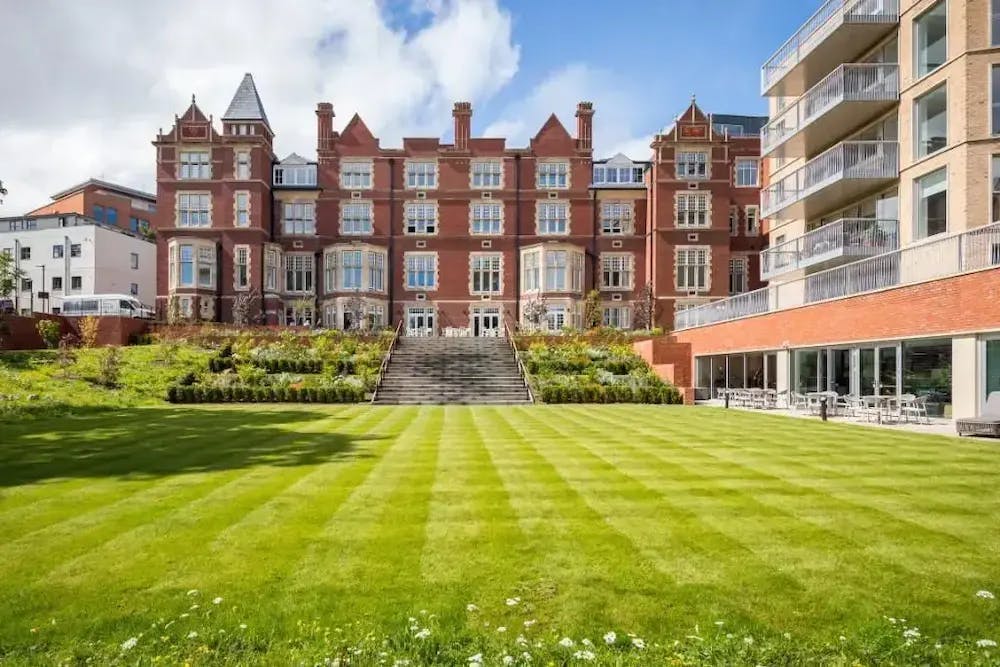
Estimated Reading Time: 9 minutes
There’s no doubt that the idea of independent living in a modern development with access to lots of great facilities is an appealing one, especially when surrounded by people looking for a similar thing. Retirement villages are exactly that - bespoke and carefully designed dwellings that help retirees enjoy a fulfilled later life.
Before opting for a retirement village, it’s important to fully understand what a retirement village is, the advantages/disadvantages, how much they cost and how to choose the right one.
Where would you like to live?
Browse the best retirement villages near you through Lottie.
In this article:
- What is a retirement village?
- Who are they aimed at?
- What are the advantages?
- What are the disadvantages?
- What does they cost?
- Retirement village companies to keep an eye out for
What Is a Retirement Village?
A retirement village is a development built specifically for older adults - often those aged 55, 60 or 65 and over.
They come with a range of superb facilities for the residents to enjoy, such as swimming pools, gyms, libraries and restaurants. When living in a retirement village, you’ll also benefit from on-site care - meaning you'll have access to extra support if ever needed.
While retirement villages are fairly new in the UK, they still represent a rapidly expanding industry, with an ever-increasing number of retirees choosing to enjoy their retirement in a stylish setting where you can live independently.
There are usually a few different accommodation types to pick from, including houses, retirement bungalows and apartments. Right now, can be found in history-rich areas with picturesque settings.
A retirement village differs from sheltered housing through its offering of premium facilities in a desirable location - which can make it a more expensive alternative. While this tends to be operated by local authorities, housing associations and charities, these villages are often bought or rented. Similar to sheltered housing is warden controlled housing. This is a form of accommodation for people with limited elderly care needs.

Who Lives in a Retirement Village?
Fed up with doing the washing up, don’t want to travel 40+ minutes to go for a swim or have an urge to take up tennis? If any of these apply to you, then a retirement village could be your calling.
They're broadly aimed at over 55s who are looking for independence and support where needed.
Retirement villages are designed to let you stay firmly in control while having everything on your doorstep; giving you the opportunity to maintain independence and freedom in the knowledge that help is on hand for everyday chores if desired. Retirement living gives you an excellent opportunity to socialise with like-minded people in a safe and secure environment.
One of the most appealing draws is the reassurance that if you need any extra support, it’s there, giving you and your family peace of mind.
To better answer whether or not a retirement village is for you, we’ve looked at the advantages and disadvantages of this property type.
Personal Care Services in Retirement Villages
In a retirement village, you can choose the level of support that’s required, depending on your individual needs. This is because a range of different care needs can be catered to.
Packages vary from development to development, but some of the care options that are usually available include 24/7 emergency support, personalised hospitality packages and planned care. With this final option, the aim is to provide support as and when you need it, while still allowing you to maintain an active and independent lifestyle.
We can help you find the perfect UK retirement village. Use our free service to filter by price, facilities, purchase type and more to ease your search.
What are the Advantages?
Freedom
You can live independently within a property that you own.
Facilities and amenities
The majority are packed with some excellent social and leisure facilities, along with communal areas. These can include restaurants, pools, cafes, pubs, libraries, hairdressers, gardens and other outdoor spaces.
Social opportunities
When you’re surrounded by other residents of a similar age with shared interests, the opportunities to socialise hugely increase.
Added security
The community aspect of a retirement village means that people often feel safer than they would be living alone.
Guest suites
Some offer apartments that family and friends can rent when they visit. People are far more likely to visit you when they have somewhere to stay.
Additional care
A few also provide access to home help and personal care.
Deferred payments
Also known as a deferred management fee, some villages offer the ability to defer the payment of your new home to ensure you live your later life to the fullest.
And What About the Disadvantages?
Reduced space
Retirement home residents often move having downsized from a larger property and have less space as a result.
Higher prices
Homes within the retirement community sector are usually more expensive than properties on the open market. These villages may be luxurious, but with that, you have to pay more for a property.
Extra service charges
Many retirement properties come with a monthly/annual fee that goes towards maintaining the communal areas and facilities.
However, there is expert advice available to help you downsize and re-design your new and own home with beloved furniture and possessions, along with financial services to ensure your accounting is taken care of.
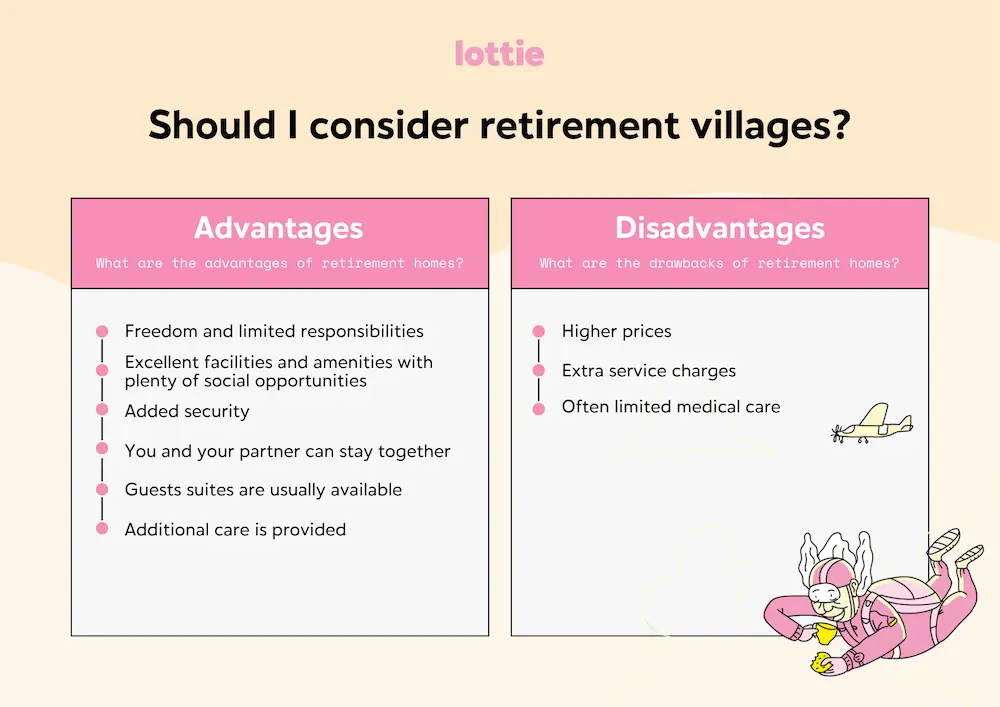
What Does It Cost to Live in a Retirement Village?
While prices will vary from location to location, the lavish lifestyle they offer means that they usually come at a premium, costing more than a standard property of a similar size.
When you consider the access to a host of communal facilities at no extra cost, often 24/7 on-site support, extra security and a concierge service then it starts to become understandable that retirement living units are 5 -10% more expensive.
Here are some of the other costs associated with living in a retirement village:
Management/service fees
This tends to fall within the region of £500 to £700 a month. This service includes any communal facilities and their maintenance, providing site security and support to residents, looking after green spaces and the management team themselves (who tend to residents’ needs).
Care costs
Depending on what’s required, the greater level of support available in a retirement village can cost hundreds of pounds every week (or around £1,300 a month).
Bills and living costs
Bills such as gas, water, electricity and wifi sometimes have to be paid but this varies from village to village.
Deferred management fee
A deferred management fee is payable from the sale of your home or change of occupier. The fee is charged to ensure that everyone who lives in a village can do so knowing there will always be sufficient funds to carry out any works whilst maintaining the village’s continued high standards
Retirement Village Companies to Keep An Eye Out For
Anchor Hanover
Known for having care homes around the country, Anchor Hanover also has retirement village properties in Buckinghamshire and Hampshire. Each of their apartments has one or two bedrooms, with a focus on maintaining independent living.
Audley Villages
With Audley Villages, you can choose between a house, cottage or apartment in 20 villages around England, with locations ranging from Yorkshire to Devon. These properties include home-care services and can be sold at any stage on the open market.
Inspired Villages
Inspired Villages has 10 villages across England, along with several new complexes under development. Each of these villages contains plenty of facilities and care support services. Properties range from one to three bedrooms and can be bought or rented.
McCarthy and Stone
McCarthy and Stone have retirement properties all over the UK. These properties include retirement and assisted living apartments with several support services.
MHA
MHA is a Christian charity that provides care, accommodation and support services for over 18,000 elderly people throughout Britain. MHA operate several retirement living communities, including retirement villages, apartments and other housing options.
Retirement Villages
Retirement Villages can be found in the home counties, the southwest and the east of England, with 16 villages in total. The majority of properties are independent living only, but a handful of sites also offer residential care, nursing care and specialist dementia care provided by HC-One - one of the country's largest care home groups.
Richmond Villages
Finally, Richmond Villages offer luxury homes in 10 villages for those aged over 55. Some of their sought after facilities include spas, swimming pools, gyms, hairdressing salons, beauty therapy and on-site restaurants. On the care side, they provide care-at-home services, residential care homes and specialist dementia care.
Retirement Villages Vs Care Homes
A care home is a residential home for (mostly) elderly residents who require regular help and care with everyday activities like getting dressed, feeding and other forms of personal maintenance. This lack of independence means that care homes provide round the clock care to their residents. With that said, many care homes still aim to promote independence for residents. These tend to be smaller in size, with fees covering any care-related expenses, along with food and accommodation.
Retirement Villages Vs Sheltered Housing
Sheltered housing also aims to help the elderly maintain an independent lifestyle while providing access to support if required. This differs from a retirement village as it usually comes in the form of a block of flats that’s been specifically built with retirees in mind. Extra facilities like cafes, health clubs and large communal rooms are usually still on offer as well.
All types of sheltered housing will be run by a site manager whose job is to deal with any day-to-day concerns or issues that residents may have. 24-hour alarm systems are also in place to ensure that any emergencies are quickly dealt with.
Retirement villages offer secure, vibrant and luxurious housing with state-of-the-art facilities for older adults. Request a free retirement living shortlist and we’ll recommend retirement properties matching your budget, location and desired facilities.

